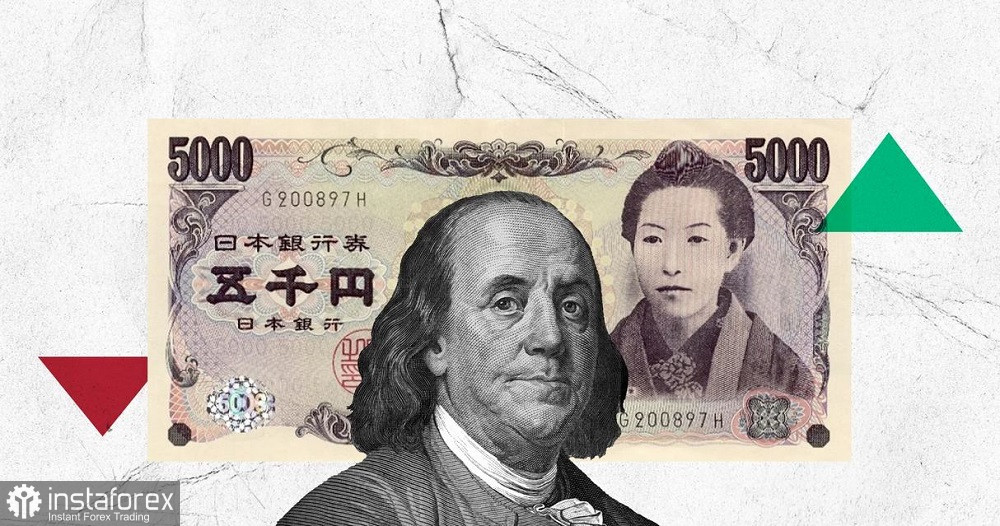The yen is losing ground again. After nearly a 500-pip rally, the Japanese currency has been falling against re greenback again. On Monday, the USD/JPY pair hit a two-week low, dropping to 141.66, reacting to the unexpected results of the elections of the ruling political party's leadership. The Liberal Democratic Party is now headed by Shigeru Ishiba, who has taken over the government and announced plans to hold early parliamentary elections—one year ahead of schedule.
The yen responded positively to Ishiba's victory, as he is considered a proponent of tight monetary policy and raising interest rates to combat inflation. Importantly, he defeated Sanae Takaichi, a candidate from the highly conservative wing of the LDP (who was considered the frontrunner in the race), who, in contrast, advocated for a softer monetary policy.

In response to Ishiba's victory, the USD/JPY pair dropped 500 pips, falling from 146.50 to the mid-141 range. However, as is often the case with political factors, their influence fades quickly—by the end of the week, the pair's buyers had recovered almost all lost points. The "Shigeru factor" was swiftly priced in by the market, which is quite logical, given that the election of a new prime minister, even one with "hawkish" views, doesn't mean the Bank of Japan will automatically accelerate rate hikes. Ishiba will play his part, of course, but not immediately and not in the public sphere. Don't expect any "Trump-style" statements from the new Japanese prime minister, like those made by the former US president who openly urged the Federal Reserve to cut interest rates.
Meanwhile, the classic fundamental factors suggest that the Bank of Japan will not rush into the next round of rate hikes. In particular, the Tokyo Consumer Price Index reflected a slowdown in inflation: the overall CPI dropped to 2.2% in September (after rising to 2.6% in August), while the core CPI fell to 2.0%. This index is considered a leading indicator for determining inflation trends nationwide, so its downward trend is a worrying sign for USD/JPY sellers. Other macroeconomic indicators also disappointed. Japan's industrial production volume dropped by more than 3% in August on a monthly basis (-3.3%) against a forecast of -0.5%. Additionally, the volume of new housing starts in Japan declined sharply in September by 5.1% (against a forecast drop of 3.3%).
Such fundamental conditions do not support the tightening of monetary policy. Bank of Japan Governor Kazuo Ueda confirmed this assumption in his recent speeches. He emphasized the need to maintain a wait-and-see strategy, "considering global economic risks and financial market instability." In his speech yesterday, he also reiterated a cautious stance. According to him, the regulator will pursue "appropriate monetary policy in order to sustainably and stably achieve the inflation target of 2%."
For the most part, the Bank of Japan's leader made general, conventional, and non-committal statements. But this is precisely what is weighing on the Japanese currency. Many of his policymakers (Naoki Tamura, Hajime Takata, and Junko Nagakawa) hinted in their September speeches that the central bank might raise interest rates again in the near future. They specifically pointed to wage indicators (which showed positive dynamics, rising by 1.1% year-on-year in June and 0.4% year-on-year in July).
However, Kazuo Ueda cooled the enthusiasm of USD/JPY sellers. He stated that the October data on service prices "will be key in determining whether inflation is accelerating." Only after a thorough analysis of this data, the regulator will shed light on whether any policy changes can be expected.
In other words, the head of the Bank of Japan cast doubt on another rate hike this year, though he did not rule out such a scenario. This indecisiveness from Ueda disappointed USD/JPY sellers. So, the yen ceased to act as a "driving force" in the USD/JPY pair.
All of this suggests that a resumption of a downward movement is only possible if the US dollar weakens. The instrument is following the dollar index, which in turn is awaiting the key report of the week—the US nonfarm payrolls to be published the day after tomorrow, on October 4. I remind you how traders reacted to the ADP report, which came out in the green today, reflecting the creation of 144,000 jobs in the private sector. On the one hand, this is a relatively modest result. On the other hand, most experts expected this figure to be around 124,000. This has sparked hope among dollar bulls that nonfarm payrolls will also be in the green. In that case, the likelihood of a 50-point rate cut at the November meeting will drop to 20-15%, and the dollar will receive additional (and quite significant!) support.
From a technical perspective, the USD/JPY pair has approached the resistance level of 145.30 (the upper line of the Bollinger Bands indicator on the daily chart). It would be advisable to enter long positions after buyers break above and consolidate above this level. In that case, the next medium-term target for the upward movement will be 147.00, which is the lower border of the Kumo cloud on the same time frame.
 English
English 
 Русский
Русский Bahasa Indonesia
Bahasa Indonesia Bahasa Malay
Bahasa Malay ไทย
ไทย Español
Español Deutsch
Deutsch Български
Български Français
Français Tiếng Việt
Tiếng Việt 中文
中文 বাংলা
বাংলা हिन्दी
हिन्दी Čeština
Čeština Українська
Українська Română
Română

